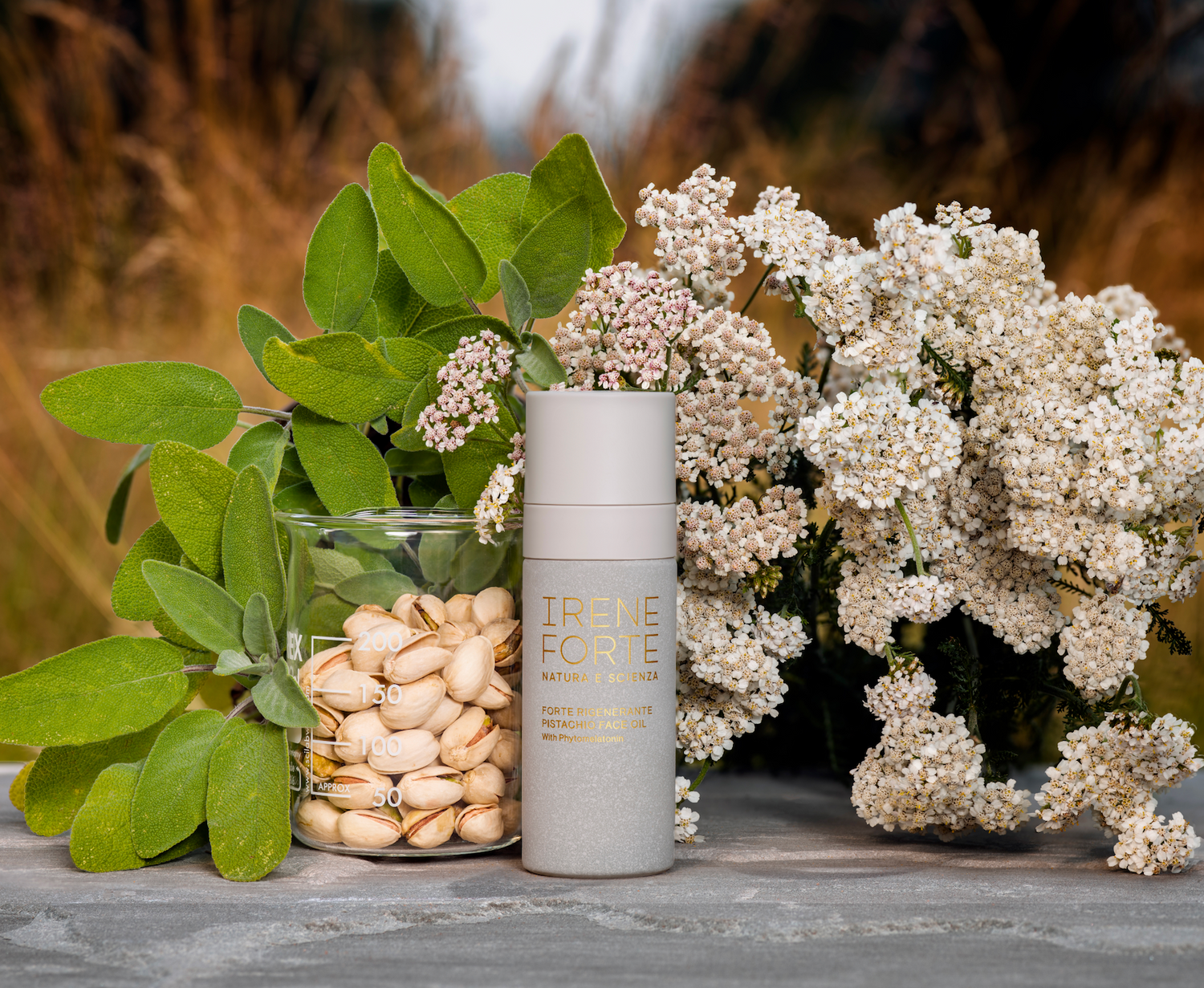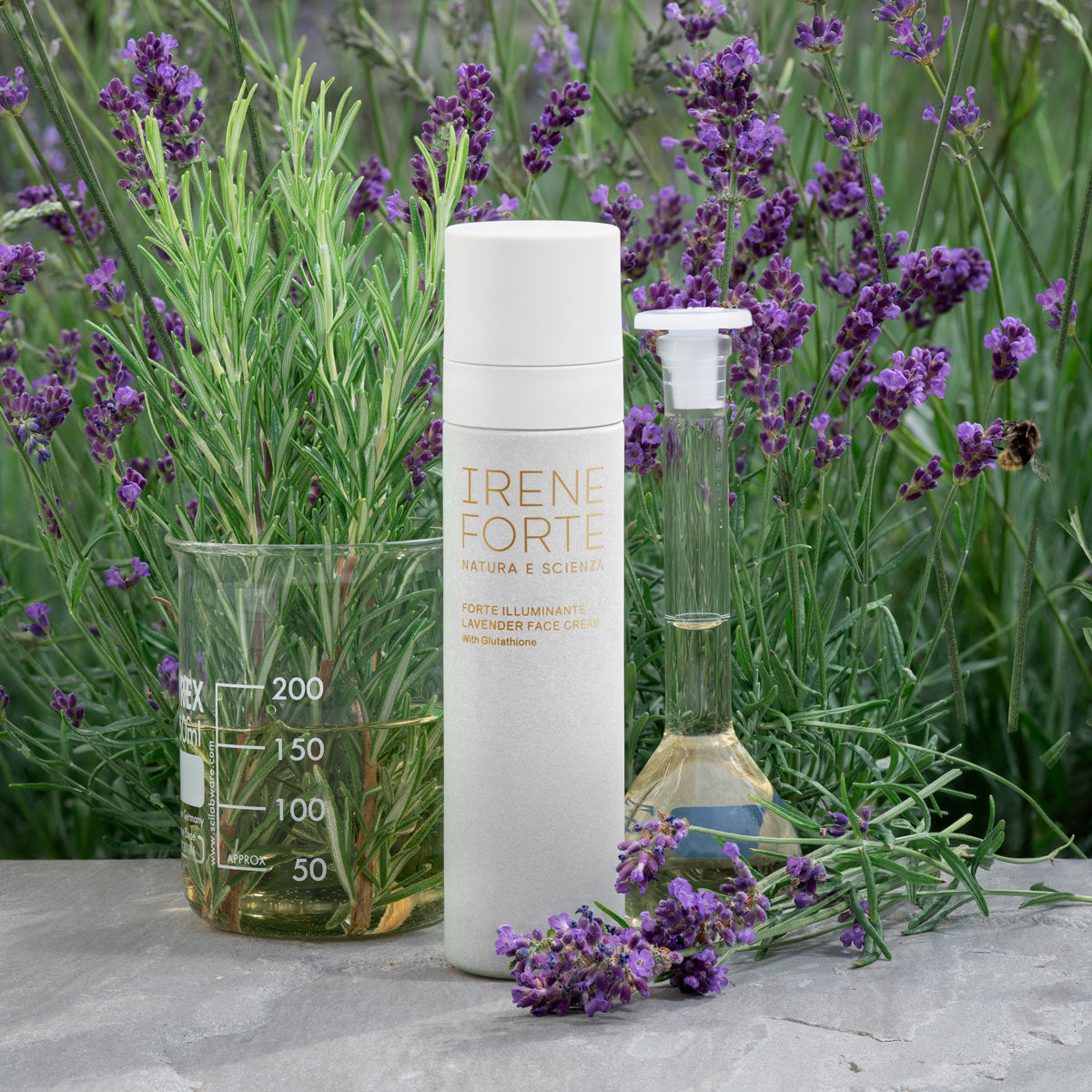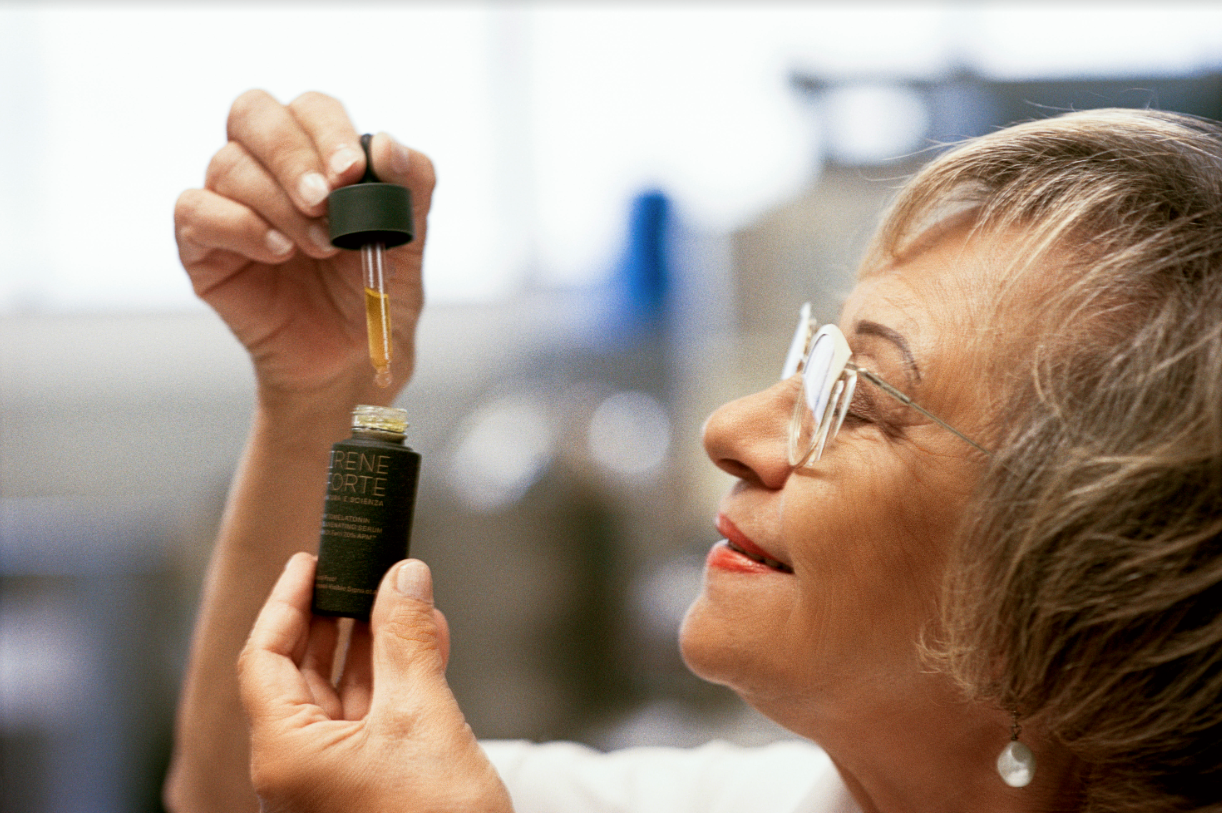Luciano Porcu is currently the Spa Director at the Irene Forte Spa in Sicily. Always passionate about the world of beauty and wellness, he studied beauty, hair and massage in college. After this, he trained with Steiner, and began working on their cruise liners, before being offered a place on their management programme. It was from this point on that he discovered a passion for managing and training teams. From 1998, he enjoyed a number of Spa Manager roles.
In 2007, he was put in charge of seven Serena Spas in the Maldives. In 2010, he set up B/Attitude (Buddha-Bar) Spa in Doha, and after this, he set up the very first Spa by Clarins back in the Maldives. He then set up the Al Safwa Spa at the premium 5 star terminal of Qatar Airways, before setting up the first Rocco Forte Spa in Jeddah. As you can see, Luciano has an impressive CV. He’s a true spa expert and knows a thing or two about skin problems. So, we asked him about acne…
What is acne?
Acne is an inflammatory skin condition that happens when your hair follicles become blocked with dead skin cells and excessive sebum.
Our skin has pores that connect to sebaceous glands under the skin; the glands produce sebum. Sebum carries dead skin cells through the hair follicles to the surface of the skin. Skin cells, sebum, and hair can clump together forming a plug. This plug gets infected with bacteria, and swelling results. Propionibacterium acnes is the name of the bacteria that lives on the skin and contributes to the infection of pimples.
Acne is often linked to changes in hormone levels during puberty. Androgens (hormones) increase in girls and boys during puberty, and cause the sebaceous glands to enlarge and make more sebum. Sebum production can go into overdrive, leading hair follicles to become clogged; bacteria can then multiply, leading to acne symptoms.
Adolescent acne does not always result in a pathological condition; acne is defined as a pathological condition only in the following cases:
- When the extent is significant, with serious repercussions on someone’s physiognomy, or with the risk of disfiguring scars as a final result of the evolution of the skin disorder;
- When it persists beyond the age of puberty/adolescence;
- When it’s due to external causes;
- When it’s linked to a pathology characterised by an excess of masculinising hormones (androgens).
What is the difference between acne and a break-out?
The difference is that acne is a skin disorder and a break-out is one of its symptoms.
What are the different types of ‘lesions’ caused by acne?
There are six different types:
- Blackheads (open comedones): these occur when a pore is clogged by a combination of sebum and dead skin cells. The top of the pore stays open, despite the rest of it being clogged. This results in the characteristic black colour seen on the surface; this is because the sebum is exposed to air and hence becomes oxidised.
- Whiteheads or micro-cysts (closed comedones): these can also form when a pore gets clogged by sebum and dead skin cells. Unlike with blackheads, the top of the pore is closed up. It looks like a small bump protruding from the skin. Some whiteheads are located just below the skin’s surface and can only be noticed by touch.
It’s worth noting that these first two lesions are considered non-inflammatory acne, as they don’t normally cause swelling.
Lesions that are red and swollen are referred to as inflammatory acne and they include the following:
- Papules: these occur when the walls surrounding your pores break down from severe inflammation. This results in hard, clogged pores that are tender to the touch. The skin around these pores is usually pink to dark red in colour.
- Pustules: these can also form when the walls around your pores break down. Unlike papules, pustules are filled with pus. These bumps come out from the skin and are usually red in colour. They often have yellow or whiteheads on top.
- Nodules: these occur when clogged, swollen pores endure further irritation and grow larger. Unlike pustules and papules, nodules are deeper underneath the skin.
- Cysts: these can develop when pores are clogged by a combination of bacteria, sebum, and dead skin cells. The clogs occur deep within the skin and are further below the surface than nodules.
Can acne be categorised into different categories?
Yes, the severity of acne is often categorised in the following categories:
- Mild: mostly whiteheads and blackheads, with a few papules and pustules;
- Moderate: more widespread whiteheads and blackheads, with many papules and pustules;
- Severe: lots of large, painful papules, pustules, nodules or cysts; you might also have some scarring.
There is also acne rosacea, which should be distinguished from other acne types. Please visit our rosacea blog to learn more.
What are possible causes of acne?
As mentioned above, acne is most commonly linked to the changes in hormone levels during puberty. Acne is also genetic and known to run in families. Hormonal changes, such as those that occur during the menstrual cycle or pregnancy, can also lead to episodes of acne in women. Polycystic ovary syndrome can also result in acne in women (causes too much androgen production). There are also some forms caused by external factors, such as repeated mechanical trauma, exposure to chlorinated hydrocarbons (chloric acne), or even incorrect product use. Some drugs can also aggravate acne.
It’s also worth noting that late-onset acne (above 20 years of age) must be carefully diagnosed by a dermatologist, since in some cases it can be linked to other medical problems (as touched upon above).
Can the right beauty regime improve acne symptoms?
A good skincare routine is incredibly important for break-out-prone skin. Your daily skincare regime can help to remove excess oil, keep pores clear, and speed up the healing of existing blemishes. With so many products available, and with so much conflicting information out there, creating a skincare routine for acne can seem confusing. However, your daily skincare routine for mild or moderate acne doesn't need to be complex to be effective. In fact, you just need a few minutes twice a day, plus a few extra minutes once to twice a week to do a face peel and face mask.
I would also look for products with acne-fighting ingredients, such as:
- Gluconolactone: this PHA (Polyhydroxy Acid) is tolerated even by sensitive skin; it works by reducing oil production and clearing out pores.
- Citric, Tartaric, Malic and Mandelic Acids: these AHAs (Alpha Hydroxy Acids) gently exfoliate and purify the skin.
- Lavender and Rosemary Waters: have anti-bacterial and anti-inflammatory qualities, making them effective in fighting acne.
- Hyaluronic Acid: the perfect hydrator for acne-prone skin.
- Lemon: reduces sebum production, has antiseptic qualities and helps to treat inflammation and scars.
- Kaolin Clay: clays may be old-fashioned, but they work wonders for acne-prone skin because of their ability to attract oil and lightly exfoliate skin.
- Benzoyl Peroxide: this kills off the bacteria that causes inflammation and that often comes with a break-out.
Can you share some at-home remedies?
When I was younger I had skin break-outs; I never forgot my grandmother's Mediterranean remedies with Lemons and Aloe Vera.
Here are they are:
Face Mask for Acne
Keep an aloe plant at home readily available.
Cut one of the leaves at the base of the plant.
Wash the leaf under running water.
Squeeze out as much of the gelatinous substance (the aloe leaf juice) from it.
Get a lemon ready, and combine 40ml of the aloe leaf juice with 15 drops of lemon juice.
If the lemon is organic, you can also add some grated lemon peel.
Mix all ingredients well together.
Apply the mask to the face, neck and décolleté (plus other areas of need).
Leave on for 15 minutes and then rinse off.
Toner for Acne
Mix a tablespoon of rose water with half a tablespoon of lemon juice.
Apply the mixture over any blemishes and imperfections (like a toner).
Can you share some skincare products that you would recommend?
I believe that an appropriate skincare routine is essential, and the Irene Forte Illuminante range is perfectly good for acne-prone skin.
Daily AM & PM
Step 1: cleanse the face with the Lavender Foam Cleanser. This is a balancing foam cleanser to help purify and brighten. A Soy Protein Complex helps gently, yet effectively remove impurities, while Lavender Water and Rosemary Water soothe and refresh the skin.
Step 2: tone with the Lemon Toner to help brighten, hydrate and purify the skin. The blend of AHAs gently tones and clarifies the skin, while Witch Hazel balances the skin.
Step 3: use the Triple Level Hyaluronic Serum next with its triple-weight blend of Hyaluronic Acid, which enhances moisture retention and hydrates the skin. It’s important to ensure that even acne-prone skin remains hydrated.
Step 4: moisturise with the Lavender Face Cream. This has many ingredients designed to purify and balance the skin, including Glutathione that is a super antioxidant for the skin.
Twice a week after the cleanser and toner, and before the serum, use the following:
Apricot Penta-Acid Polish: leave to sit for 5 minutes to allow the five chemical exfoliants (including four AHAs and a PHA) to purify and brighten. Then lightly work the Apricot Seed Powder to effectively remove dead skin cells, as well as clarify and refine the skin, before removing.
Lavender Tetra-Acid Mask: apply this mask for 10 minutes. The Azelaic Acid combined with Tartaric, Citric and Malic Acids, gently exfoliate, clarify and help balance excess oils to deliver a brighter, more even skin tone.
We've been asked a lot about break-outs around the jawline and hairline, can you give any advice on this?
For hairline break-outs, I would strongly recommend the following:
- Avoid wearing headwear that may irritate the skin in this area;
- Avoid touching the area with your hands;
- Follow the advice above in terms of products, and when you’re toning really focus on dabbing the toner in this area;
- Don't use oily hair or facial products.
Break-outs around the jawline occur when hair follicles in the skin become clogged with dead cells and sebum. However, they can also be caused by using the wrong moisturisers, make up, and products that contain heavy oils. Here, I would follow the same advice as above.
Are there any treatments that you would recommend for acne-prone skin?
It really depends on the severity of your acne. I would advise a skin consultation to determine your acne category, and thus to decide on the most appropriate treatments. However, here is some advice on the various categories:
Grade 1(mild): a purifying facial should be performed once a month. Apply salicylic acid, which works well on non-inflammatory acne, naturally exfoliating the skin and removing dead skin cells that can lead to blackheads and whiteheads. With the salicylic acid, you’ll start to see results after 4-6 weeks. Combine this with my skincare recommendations highlighted above.
Grade 2 (moderate): this is more difficult to treat because many of the pores are already sealed. A purifying facial should be performed twice a month. I would then recommend the application of topical retinoids, where you’ll start to see results after 6-12 weeks. Combine this with my skincare recommendations highlighted above.
Grade 3 (severe): a purifying facial should be performed twice a month. I would also recommend products containing a percentage of benzoyl peroxide to help reduce swelling, inflammation, excess sebum and reduce bacteria on the skin. When you start to apply benzoyl peroxide, your acne will turn red and then peel off; you should start to notice an improvement after 6 weeks. Your dermatologist may prescribe either an oral or topical antibiotic to use alongside the benzoyl peroxide. Combine this with my skincare recommendations highlighted above.
We've been asked a lot about acne-scarring and how to improve this; any advice you can share?
Acne scars are the marks left on the skin by various lesions. If the acne was intense and long, the ability of the skin to regenerate itself naturally and to replace the superficial layers of the damaged skin will be challenging.
A visit to the dermatologist should help to define the best treatment plan. Treatments can include:
- Surgical removal of scars;
- Lifting of depressions with a surgical technique;
- A needling technique to boost collagen production;
- Peels to boost collagen production;
- Fillers to fill the lesions;
- Radiofrequency or fractional laser (if the lesions are deeper and wider).
For scar prevention in the first place, here are some tips:
- Begin acne treatment as soon as possible;
- Do not crush or squeeze spots;
- If abscesses are formed, they need to be treated immediately with antibiotic infiltration.
How does diet contribute to acne?
The appearance of acne is one of the many symptoms that tell us that the body is not in balance. However, scientifically speaking there is not an anti-acne diet. Either way, we can improve the health of our skin through good nutrition.
I would recommend to eat foods that help reduce skin inflammation. For example:
- Zinc: has natural anti-inflammatory properties and inhibits the bacteria that causes acne. Beans, pumpkin seeds, quinoa, almonds, and egg yolk are all rich in zinc.
- Omega 3: reduce your intake of Omega 6 in favour of Omega 3, which is present in fish and plant foods, such as flaxseed and chia seeds.
- Probiotics: foods rich in prebiotic substances (for example fermented foods) help the digestion to work properly, helping to decrease inflammation.
- Natural foods: consume fresh and seasonal foods such as fruits, vegetables, as well as nuts and seeds.
Any other tips we should give our readers?
- Don’t try and sort it out yourself; get help!
- Avoid things like soap to cleanse the skin; soap can cause further damage to the epidermal barrier, contributing to inflammation.
- Look for anti-acne sun products with high sun protection (at least SPF 30).
- Wash your hands thoroughly before treating your face; this reduces the risk of infection and the worsening of existing acne.
- Although it may be obvious, it’s necessary to keep yourself in balance psychologically to improve acne symptoms.
- Take advantage of herbal remedies.




